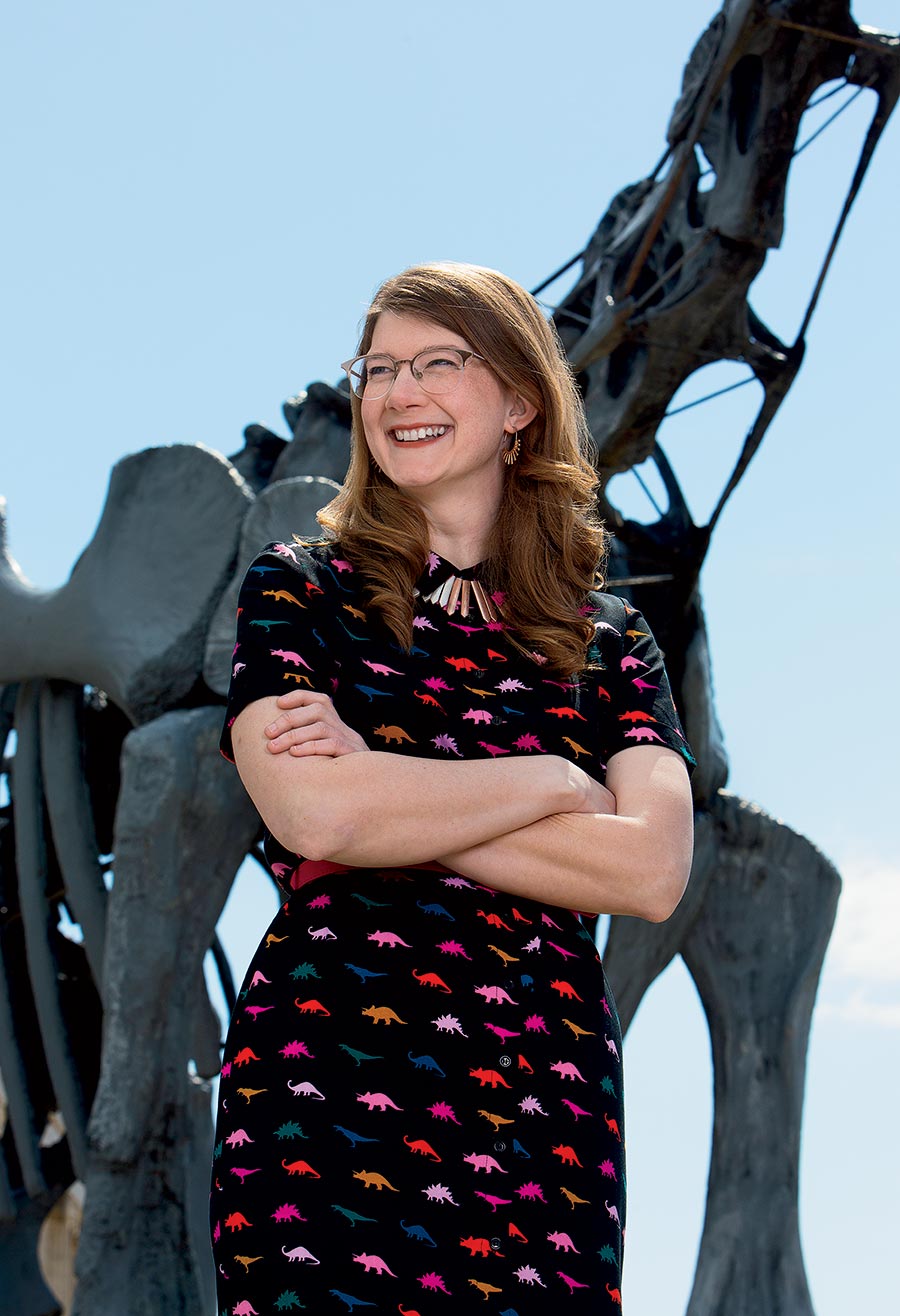
You grew up in the Great Plains, the region that you survey in your new three-part PBS series, Prehistoric Road Trip, produced by WTTW and premiering June 17. Did that influence your focus?
My family still has ranch land outside of Faith, South Dakota, which is where Sue the T. rex was excavated. I go to work and look at this amazing fossil that millions of people have seen and know that there’s this really deep link between where we are both from. How fossils can shape your identity was something I wanted to explore.
How do fossils shape your identity?
My grandparents were always interested in the story of Sue. They followed the legal battles over Sue’s ownership — it was a big federal case. And when Sue came to the Field Museum in 2000, my grandparents made a special trip. I know a lot of people come, but to make a 13-hour drive to see a dinosaur? It was a big deal. I made a painting of my grandfather with Sue that hung above his bed until he died. This was all before I even worked at the place.
You can tell how personal this is — you teared up in the video announcing the series.
The sense of wonderment really gets squeezed out of people. We need more scientists talking about how they searched for a fossil for five or six or seven years and, when they finally found it, the moment that they were brought to tears. There’s so much more to it than just a researcher looking at a rock.
Did you experience any moments like that during filming?
The crew from the Royal Ontario Museum invited us to a triceratops dig site with the caveat that they didn’t know what all was there. The day we were filming, they uncovered the entire face — the horn, the beak. To know that we’re the first things on this planet in 66 million years to see this animal — we were like kids.
The series covers about half of Earth’s history. Which half?
The half where things get exciting. Quick timeline lesson: The earth is about four and a half billion years old. We start at the two and a half billion mark, when some of the first photosynthetic bacteria grew in an ocean. Because of this bacteria, we have oxygen. It’s why all other life was able to grow and diversify and evolve. So, thanks, bacteria.
On your YouTube series, The Brain Scoop, what gives you the confidence to, say, livestream the dissection of an alligator?
It comes from asking the ether, “Does anybody want to see this?” And the answer has always been yes. I want to give people access to places they may not be able to access themselves. And if they can access it, I want to encourage their enthusiasm.
You frequently rate segments with a gross-o-meter. Has there ever been anything that’s too gross for you?
Squirrel McNasty Face [a dead squirrel which had a large dental abscess] was pretty gross. I don’t particularly enjoy rewatching that. But it’s a huge hit with kids. At one of the first members’ nights we did at the museum [after I started working there], I turned around a corner and heard these two kids scream “Squirrel McNasty Face!” They ran over and started jumping around chanting “Squirrel McNasty Face! Squirrel McNasty Face!” Their mom told me that they insisted on watching that video every night before they went to bed.
You study such immense stretches of time. What perspective does that give you on the crises we’re facing today, like climate change?
One of the things that my co-producer and I talked about a lot is this statistic that 99 percent of all species that have ever lived on our planet are extinct. Everything today is part of the surviving 1 percent. That’s amazing. When you think about it from that perspective, it’s really frustrating that short-term actions that are having such negative consequences. The future is coming — it just comes down to whether or not we’re all contributing to a future that everybody wants to be a part of. With the opportunity to create a three-hour series about anything, I feel a tremendous amount of responsibility to use this platform to influence people to reinvest in ourselves and our world. [Starts to cry.] I’m getting emotional just thinking about it.
During the pandemic, you filmed at home. What kinds of discoveries have you made in your own small space after being used to the Field?
Fascinating things are always happening in my backyard. A couple of years ago, my partner and I bought a handful of goldfish from Petco. We tossed them into the pond, and they’ve survived the last two winters. It’s just remarkable to think about: They can hunker down during the coldest months and shut down their bodily function. And then they can come out on the other side.


